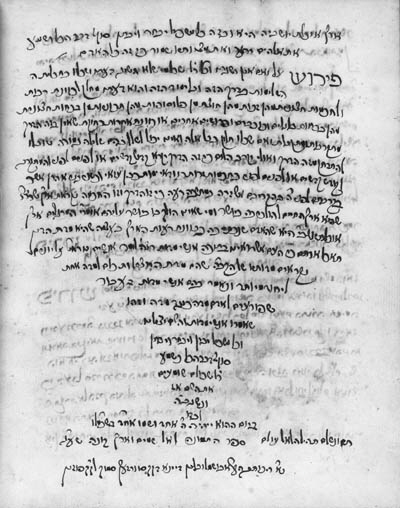|
Sefer HaTemunah
''Sefer HaTemunah'' ( he, ספר התמונה ) (lit. "Book of the Figure", i.e. shape of the Hebrew letters) is a 13–14th century kabbalistic text. It is quoted in many '' Halakhic'' sources. Origins ''Sefer HaTemunah'' was probably written anonymously in the 13th or 14th century, but it is pseudepigraphly attributed to Nehunya ben HaKanah and Rabbi Ishmael, tannaim of the 1st and 2nd centuries. According to ''Hebrew Manuscripts in the Vatican Library Catalog'', the work was composed in the 1270s. The first extant edition was published in the city of Korzec in Poland in 1784. Aegidius of Viterbo, a 15th-century cardinal, was influenced by ''Sefer HaTemunah'', as can be seen in his writings ''Shekhinah'' and ''On the Hebrew Letters''. Concepts Sabbatical cycles One of the main concepts in ''Sefer HaTemunah'' is that of the connection of the Sabbatical year (Hebrew: '' Shmita'') with ''sephirot'' and the creation of more than one world. The author of ''Sefer HaTemunah'' belie ... [...More Info...] [...Related Items...] OR: [Wikipedia] [Google] [Baidu] |
Hebrew Alphabet
The Hebrew alphabet ( he, אָלֶף־בֵּית עִבְרִי, ), known variously by scholars as the Ktav Ashuri, Jewish script, square script and block script, is an abjad script used in the writing of the Hebrew language and other Jewish languages, most notably Yiddish, Ladino, Judeo-Arabic, and Judeo-Persian. It is also used informally in Israel to write Levantine Arabic, especially among Druze. It is an offshoot of the Imperial Aramaic alphabet, which flourished during the Achaemenid Empire and which itself derives from the Phoenician alphabet. Historically, two separate abjad scripts have been used to write Hebrew. The original, old Hebrew script, known as the paleo-Hebrew alphabet, has been largely preserved in a variant form as the Samaritan alphabet. The present "Jewish script" or "square script", on the contrary, is a stylized form of the Aramaic alphabet and was technically known by Jewish sages as Ashurit (lit. "Assyrian script"), since its origins we ... [...More Info...] [...Related Items...] OR: [Wikipedia] [Google] [Baidu] |
